40 periodic table with metal and nonmetal labels
Metal and non-metal oxides - The periodic table - BBC Bitesize Metals in the periodic table, Metals are found on the left and in the middle of the, periodic table. A line of steps underneath boron (B) can be drawn to divide the table into metals and... Metals and non-metals in the periodic table - The periodic table - AQA ... Metals are on the left of the periodic table, and non-metals are on the right. Atomic structure and the periodic table, Elements in group 1 and group 2 are metals. Atoms of group 1 elements have...
Periodic Table of the Elements - Metals The most common magnetic metal is iron. Metals like uranium and plutonium are radioactive because as their nucleus breaks up, they release radiation, All the metals are found on the left side in the periodic table. They are further classified as, alkali metals, alkaline earth metals, transition metals, inner transition metals,
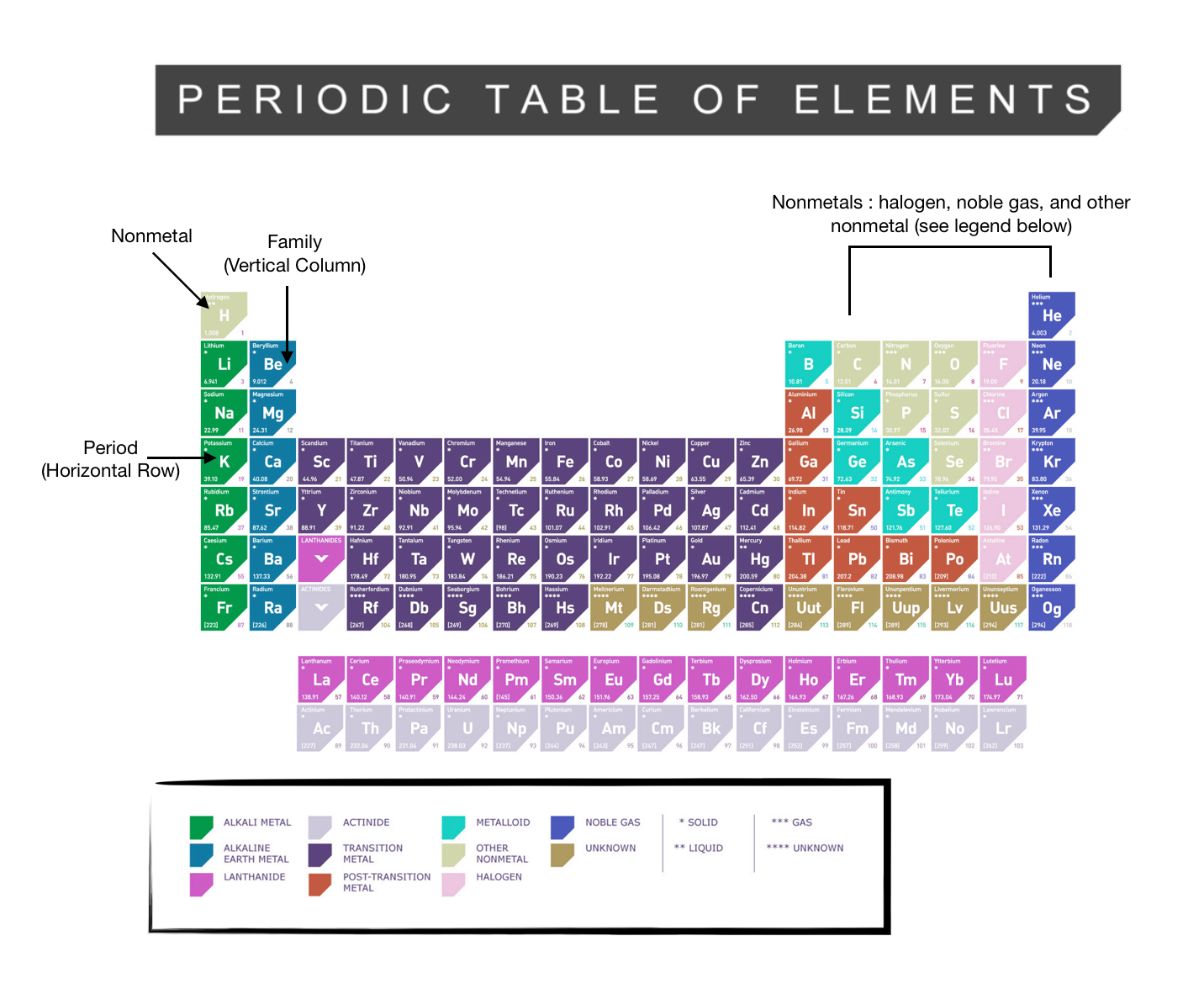
Periodic table with metal and nonmetal labels
Metals and Non Metals of the Periodic Table - breakingatom.com Non metals in this part of the periodic table tend to be liquids and gases and are brittle, when they are hit they break apart and shatter. Metals also tend to be shiny and silver coloured where as non metals tend to be coloured and sometimes dull. , Some elements in these groups you will be familiar with are oxygen, nitrogen and carbon. Metals, Nonmetals, and Metalloids of the Periodic Table - ThoughtCo Elements to the far right of the periodic table are nonmetals. The exception is hydrogen (H), the first element on the periodic table. At ordinary temperatures and pressures, hydrogen behaves as a nonmetal. Properties of Metals, Most elements are metals. Examples of metals include iron, tin, sodium, and plutonium. Difference Between Metals And Nonmetals - BYJUS Difference Between Metals and Nonmetals- The elements present on the extreme right side of the periodic tables are non-metal, About 80 of the 105 elements in the periodic table are regarded as metals. To Learn the major differences between Metals and Nonmetals. Understand the definition, properties & uses of metals and non-metals, Visit BYJU'S for more content
Periodic table with metal and nonmetal labels. Periodic Table of Elements - PubChem Such was the case when IUPAC recently reviewed elements 113, 115, 117 and 118, and decided to give them official names and symbols (goodbye, ununseptium and hello, tennessine!). Atomic weights found within a periodic table one might think are constant. The truth is that atomic weights have changed as a function of time. Labeled Periodic Table of Elements with Names - Science Struck Non-Metals: Hydrogen, Carbon, Nitrogen, Oxygen, Phosphorus, Sulfur and Selenium are seven non-metals located in the 14th, 15th and 16th group of the periodic table. These elements are very brittle and do not easily conduct electricity. Noble Gases: Noble gases are located in 18th group of the periodic table. Helium, Neon, Argon, Krypton, Xenon ... On Periodic Table Label Alkaline Earth Metals These extremely reactive no-metal components are found in class 17 and make up the 17th column. They can be made up of fluorine, chlorine and bromine and iodine, so that as of this composing, astatine. Halogens are very rare on Earth and therefore are radioactive. PDF Metals, Non-Metals, Metalloids and the Periodic Table Some examples of non-metals and their atomic symbols: , Oxygen (O) − Helium (He) , Sulfur (S) − Chlorine (Cl) , Neon (Ne) − Nitrogen (N) , Metalloids , Have properties of both metals and non-metals , Some are shiny, others dull , Some are malleable and ductile ,
Periodic Table/Metals/Nonmetals Quiz - Quizizz D. Question 10. 30 seconds. Q. A student tested the conductivity of four elements using an incomplete electrical circuit. When the element is placed in the circuit, the bulb lights up brightly, lights up dimly, or does not light up at all based on the element's ability to conduct electricity. The table below shows the results of her ... en.wikipedia.org › wiki › NonmetalNonmetal - Wikipedia In periodic table terms, an analogy can be drawn between the noble gases and noble metals such as platinum and gold, with the latter being similarly reluctant to enter into chemical combination. As a further example, xenon, in the +8 oxidation state, forms a pale yellow explosive oxide, XeO 4 , while osmium , another noble metal, forms a yellow ... Groups and Periods of the Periodic Table --------------------Metals ... Metals (left side of a period) generally have a lower electron affinity than nonmetals (right side of a period), with the exception of the noble gases. According to their shared physical and chemical properties, the elements can be classified into the major categories of metals, metalloids and nonmetals. Metals, Most elements are metals. List of Metals - Science Notes and Projects Location of Metals on the Periodic Table. Over 75% of the elements are metals, so they fill most of the periodic table. Metals are on the left side of the table. The two rows of elements below the main body of the table (the lanthanides and actinides) are metals. Uses of Metals. Metals find use in every aspect of life. Here is a list of some of ...
› 37409050 › general_chemistry_pdf(PDF) general-chemistry.pdf | Sumit Banerjee - Academia.edu general-chemistry.pdf Periodic table metals metalloids and nonmetals - Wordwall 10000+ results for 'periodic table metals metalloids and nonmetals'. Metals, Nonmetals, Metalloids Maze chase. by Kelsiedreiling2. G6 Science. 6.6A Metals, Nonmetals and Metalloids Group sort. by Jmonarez. G6 G8. Metals, Metalloids and Nonmetals Gameshow quiz. by Ktsimms31. Periodic Table: Metals, Non-metals, and Metalloids - Quizlet Metalloid. the set of elements that separate the metals from the nonmetals on the periodic table and that possess properties of both metals and nonmetals. Period. a row on the periodic table. Group. a column on the periodic table, also known as a chemical family since elements in groups share similar chemical properties. Noble gases. Elements and The Periodic Table | CHEM 1305 Introductory Chemistry ... Metal or Nonmetal? Using the periodic table, classify each of the following elements as a metal or a nonmetal, and then further classify each as a main-group (representative) element, transition metal, or inner transition metal: uranium, bromine, strontium, neon, gold, americium, rhodium, sulfur, carbon, potassium,
Periodic table labeled with Metals Nonmetals and Metalloids Periodic table labeled with Nonmetals, Elements which are in the top right corner of the Periodic table are classified as Nonmetals ( Hydrogen is also a nonmetal which is located in the group 1). Nonmetals have the tendency to gain the electrons during a chemical reaction.
Metals and non-metals in the periodic table - PubMed A link between that theory and the work of Sir Nevill Mott on the metal-non-metal transition is also highlighted. The application of the 'simple', but highly effective Goldhammer-Herzfeld and Mott criteria, reveal when a chemical element of the periodic table will behave as a metal, and when it will behave as a non-metal.
The Periodic Table Of Metals And Nonmetals | Science Trends Non-metals can be easily located on the Periodic Table because they are to the right of the line that looks like a stepping ladder. The only exception to this is atomic number 1, Hydrogen (H), which has a different location on the table. Non-metals are characterized by having the exact opposite properties of metals.
en.wikipedia.org › wiki › MetalloidMetalloid - Wikipedia Recognition status, as metalloids, of some elements in the p-block of the periodic table. Percentages are median appearance frequencies in the lists of metalloids. The staircase-shaped line is a typical example of the arbitrary metal–nonmetal dividing line found on some periodic tables.
Blocks of the Periodic Table: s-block, p-block, d-block, f-block Also, read about Trends in Periodic Table, here. Non - Metals Non-metals are located at the top right-hand side of the Periodic Table. In a horizontal row, the property of elements changes from metallic on the left to non-metallic on the right. Non-metals are usually solids or gases at room temperature with low melting and boiling points.
phet.colorado.edu › en › simulationBuild an Atom - Atoms | Atomic Structure | Isotope Symbols ... Build an atom out of protons, neutrons, and electrons, and see how the element, charge, and mass change. Then play a game to test your ideas!
› laws-regs › regulations1910.1450 App A - National Research Council Recommendations ... The CSB issued a case study on an explosion at Texas Tech University in Lubbock, Texas, which severely injured a graduate student handling a high-energy metal compound. Since 2001, the CSB has gathered preliminary information on 120 different university laboratory incidents that resulted in 87 evacuations, 96 injuries, and three deaths.
Periodic Table of Elements: Los Alamos National Laboratory Nonmetals. The term "nonmetals" is used to classify the elements H, C, N, P, O, S, and Se. Halogens. The halogen elements are a subset of the nonmetals. They comprise group 17 of the periodic table, from F through At. They generally very chemically reactive and are present in the environment as compounds rather than as pure elements. Noble gases.
Periodic Table Printable - Free Printable Periodic Table 2022 No Metales Tabla Periódica, September 1, 2022 by tamble, No Metales Tabla Periódica - There are several teams of precious metals within the Occasional Dinner table, and this post will explore the key groups of these components. Moreover, we'll deal with several of the more complex metallic alloys, such as gold and silver.
Metals on the Periodic Table: Definition & Reactivity Learn about the groupings of metals and nonmetals on the periodic table, features in metallic bonding and reactivity, and their formation of ionic compounds. Updated: 10/13/2021 Create an account
Labeled Periodic Table | Science Trends Most of the elements found on the periodic table are metals, and metals are distinguished by properties like: Being shiny, having high luster, Typically solid at room temperature, Good conductors of electricity and heat, Malleable, Dense, Loose electrons easily, Semimetals, or metalloids, have properties which are in between metals and nonmetals.
› 2021 › 08First 10 elements of the periodic table - chemistry1science Aug 07, 2021 · First 10 elements of the periodic table . First 10 elements and their symbols: Hydrogen (H) Helium (He) Lithium (Li) Beryllium (Be) Boron (B) Carbon (C) Nitrogen (N) Oxygen (O) Fluorine (F) Neon (Ne) 1- Hydrogen. Symbol: H. Atomic Number: 1. Atomic Mass: 1.008. Oxidation States: +1, -1. Standard State: Gas. Group Block: Nonmetal. Year ...
The Periodic Table: Metals, Nonmetals, and Metalloids Metals, In the periodic table, you can see a stair-stepped line starting at Boron (B), atomic number 5, and going all the way down to Polonium (Po), atomic number 84. Except for Germanium (Ge) and Antimony (Sb), all the elements to the left of that line can be classified as metals.
Metals, Nonmetals, and Metalloids on the Periodic Table A description and practice of finding metals, nonmetals, and metalloids on the Periodic Table.In general metals are found on the left-hand side of the period...
List of Elements That Are Nonmetals - ThoughtCo There are 7 elements that belong to the nonmetals group: Hydrogen (sometimes considered an alkali metal) Carbon, Nitrogen, Oxygen, Phosphorus, Sulfur, Selenium, Although these are the elements in the group nonmetals, there are two additional element groups that could be included, since the halogens and noble gases also are types of nonmetals.
opengeology.org › textbook › 3-minerals3 Minerals – An Introduction to Geology Derive basic atomic information from the Periodic Table of Elements. Describe chemical bonding related to minerals. Describe the main ways minerals form. Describe the silicon-oxygen tetrahedron and how it forms common silicate minerals. List common non-silicate minerals in oxide, sulfide, sulfate, and carbonate groups.
How Metal Elements Differ From Nonmetal Elements - OneMonroe Furthermore, metal elements have a higher melting point than that of nonmetal elements. In other words, it takes more heat for a metal element to melt than it does for a nonmetal element to melt. Metal elements are also malleable and ductile, allowing them to be "worked.". Nonmetal elements have poor electrical, as well as thermal ...
Where are Nonmetals located on the Periodic Table? (+Images) There are 18 nonmetals on the Periodic table. All these nonmetals are located on the upper right corner of the Periodic table ( Hydrogen is located on the left top corner) In the above image, the nonmetals are represented in yellow color. [ Note: Astatine (atomic number 85) shows characteristics of nonmetals (halogens) as well as metalloids.
Difference Between Metals And Nonmetals - BYJUS Difference Between Metals and Nonmetals- The elements present on the extreme right side of the periodic tables are non-metal, About 80 of the 105 elements in the periodic table are regarded as metals. To Learn the major differences between Metals and Nonmetals. Understand the definition, properties & uses of metals and non-metals, Visit BYJU'S for more content
Metals, Nonmetals, and Metalloids of the Periodic Table - ThoughtCo Elements to the far right of the periodic table are nonmetals. The exception is hydrogen (H), the first element on the periodic table. At ordinary temperatures and pressures, hydrogen behaves as a nonmetal. Properties of Metals, Most elements are metals. Examples of metals include iron, tin, sodium, and plutonium.
Metals and Non Metals of the Periodic Table - breakingatom.com Non metals in this part of the periodic table tend to be liquids and gases and are brittle, when they are hit they break apart and shatter. Metals also tend to be shiny and silver coloured where as non metals tend to be coloured and sometimes dull. , Some elements in these groups you will be familiar with are oxygen, nitrogen and carbon.

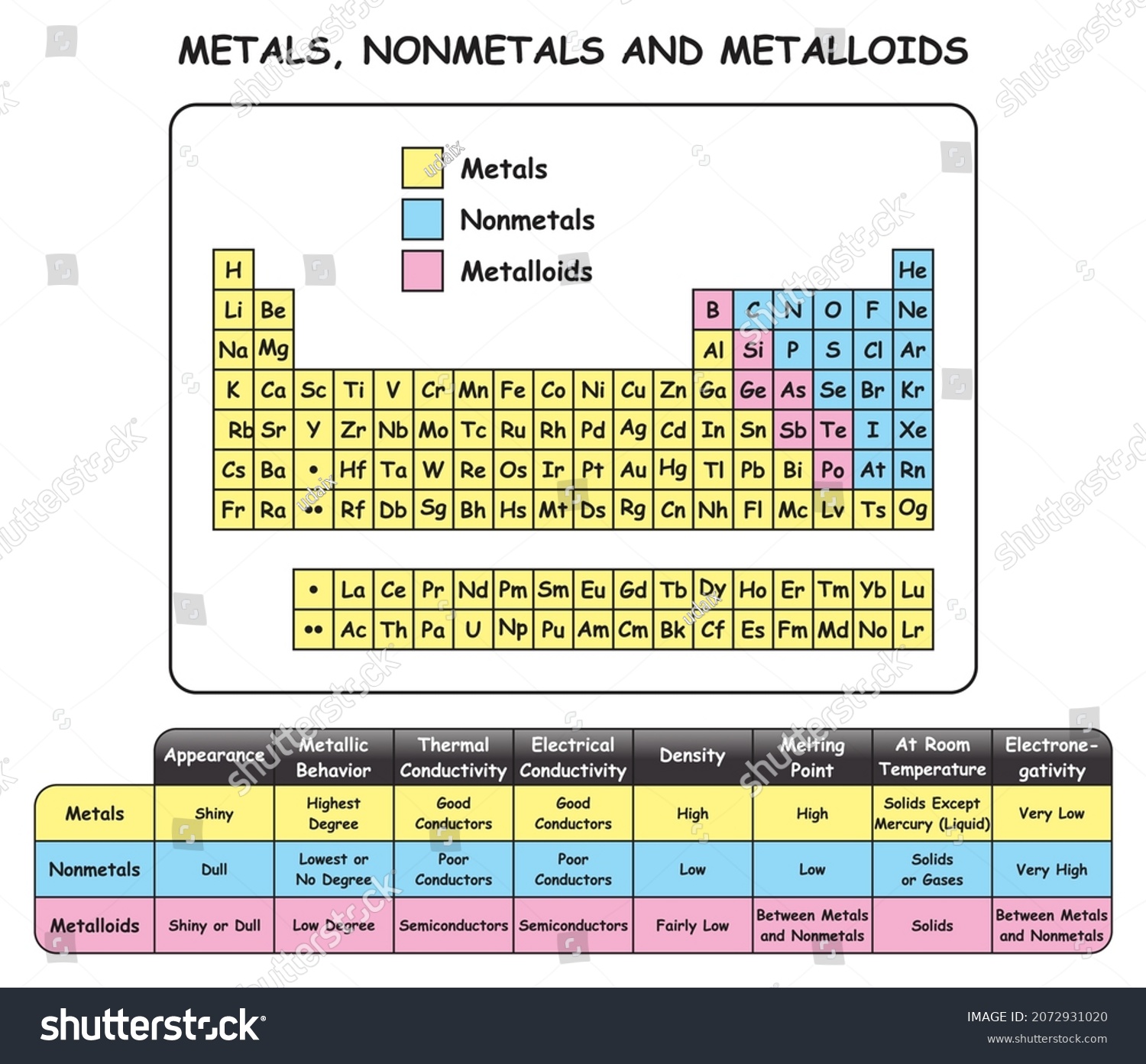






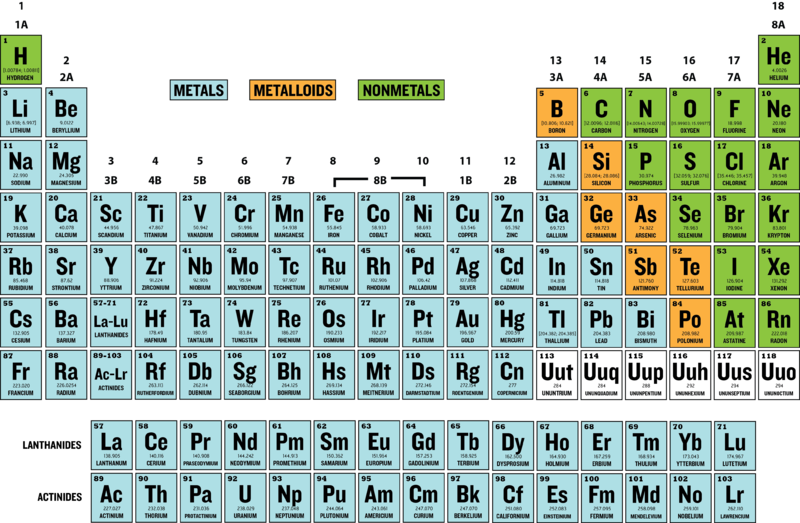

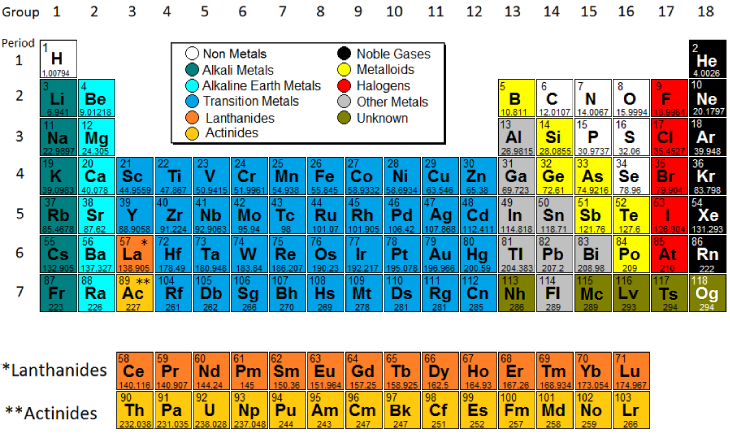
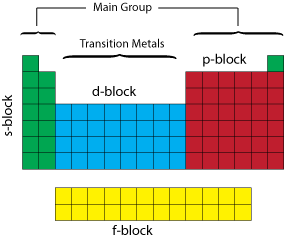
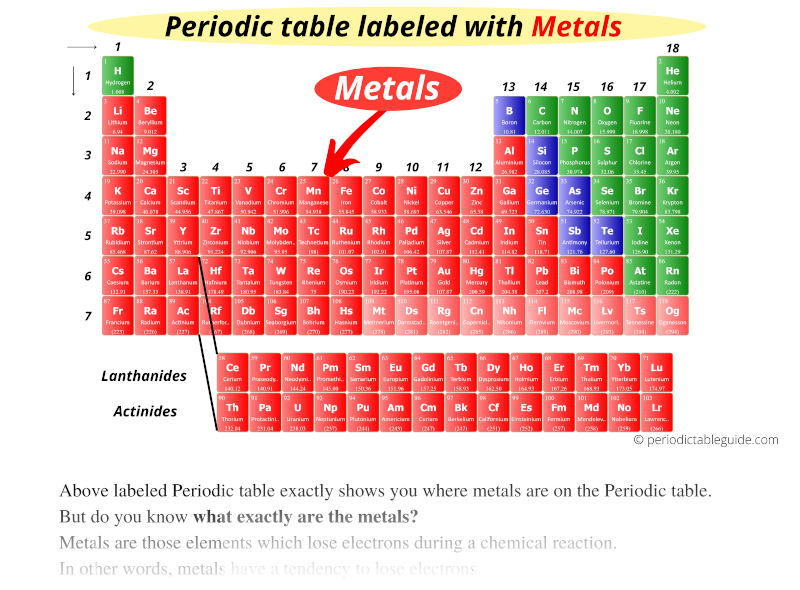
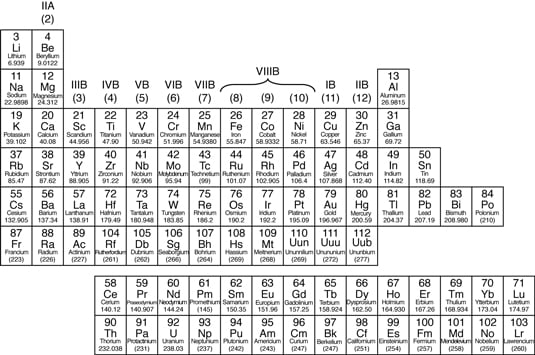

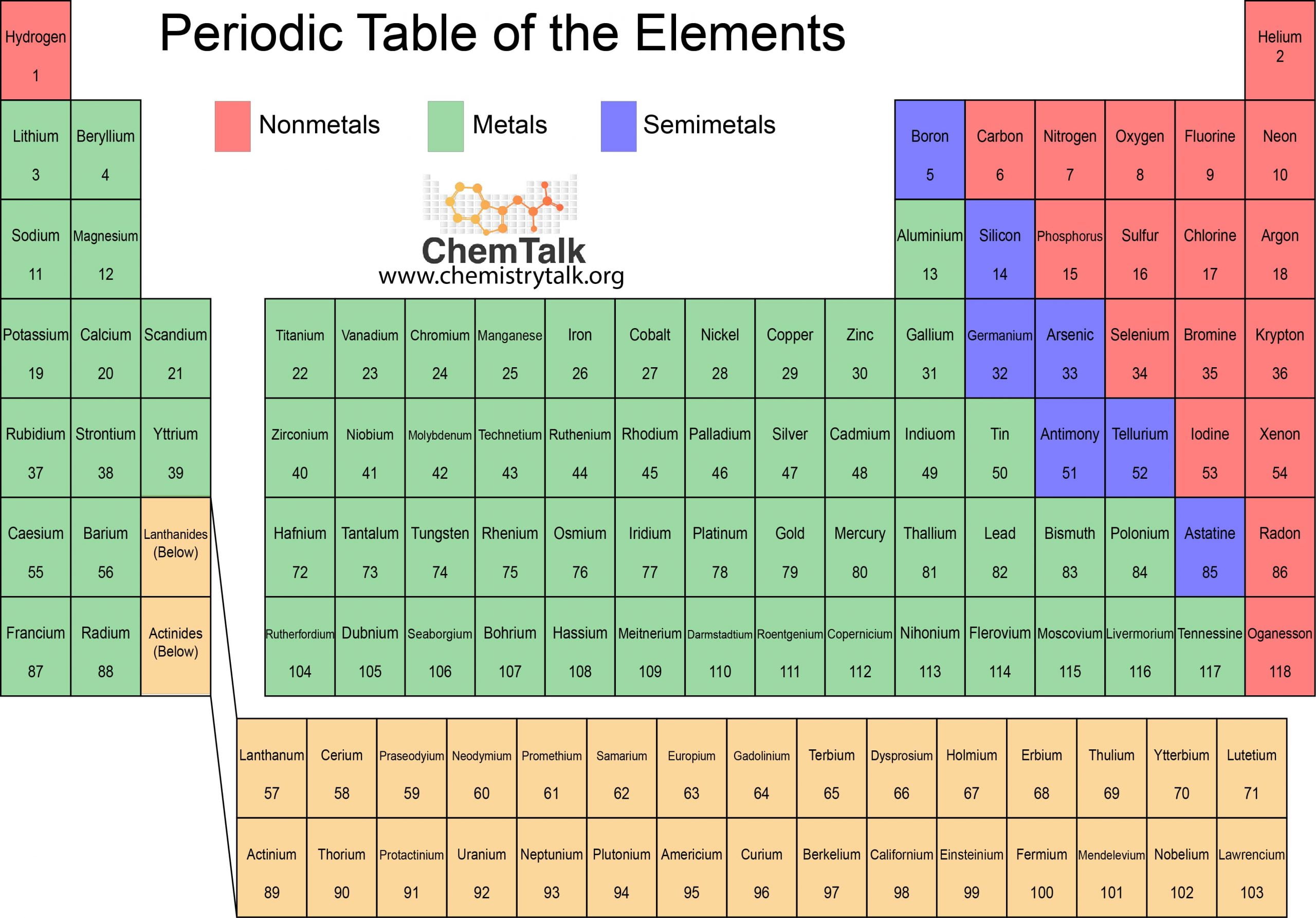
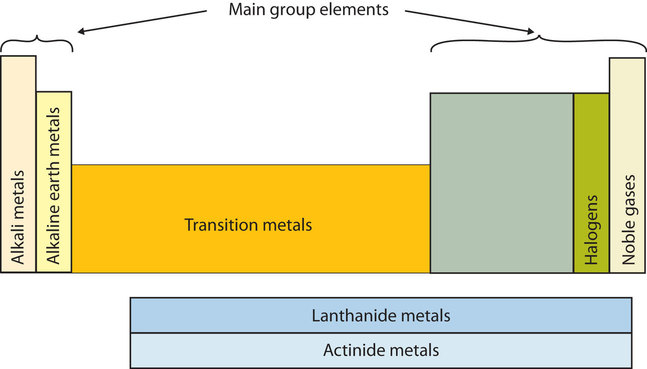
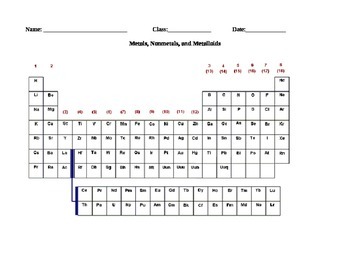







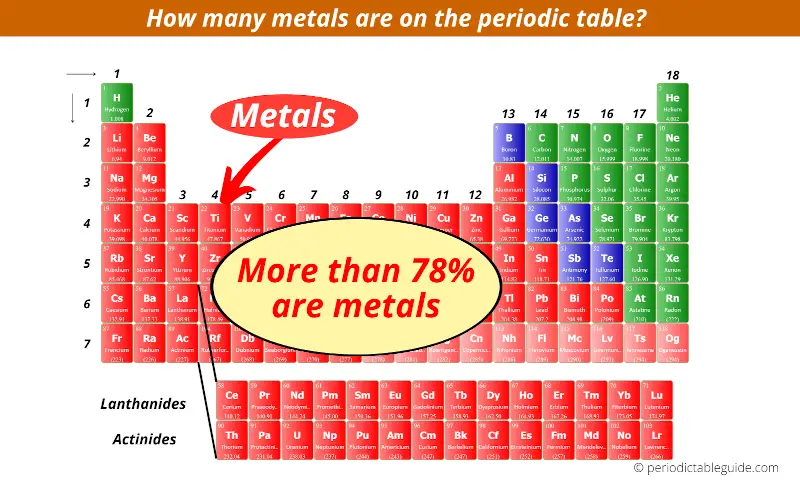


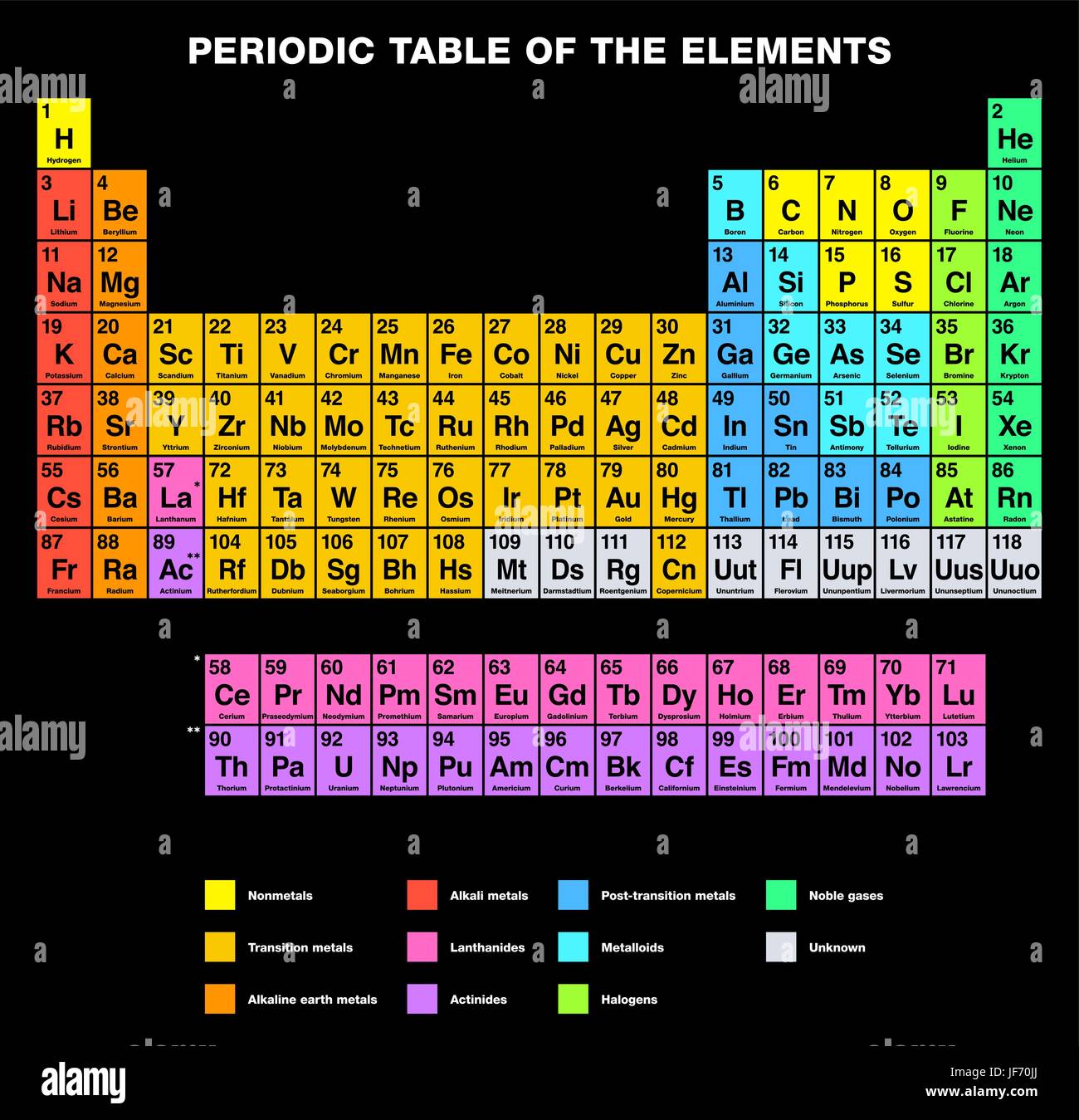
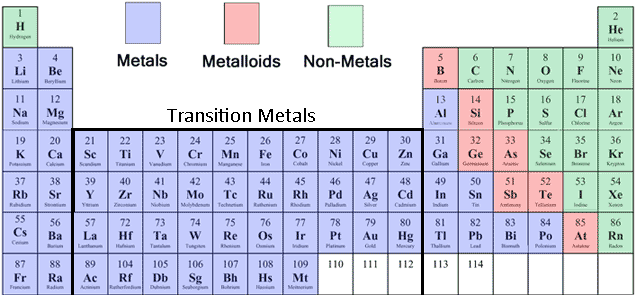


Post a Comment for "40 periodic table with metal and nonmetal labels"